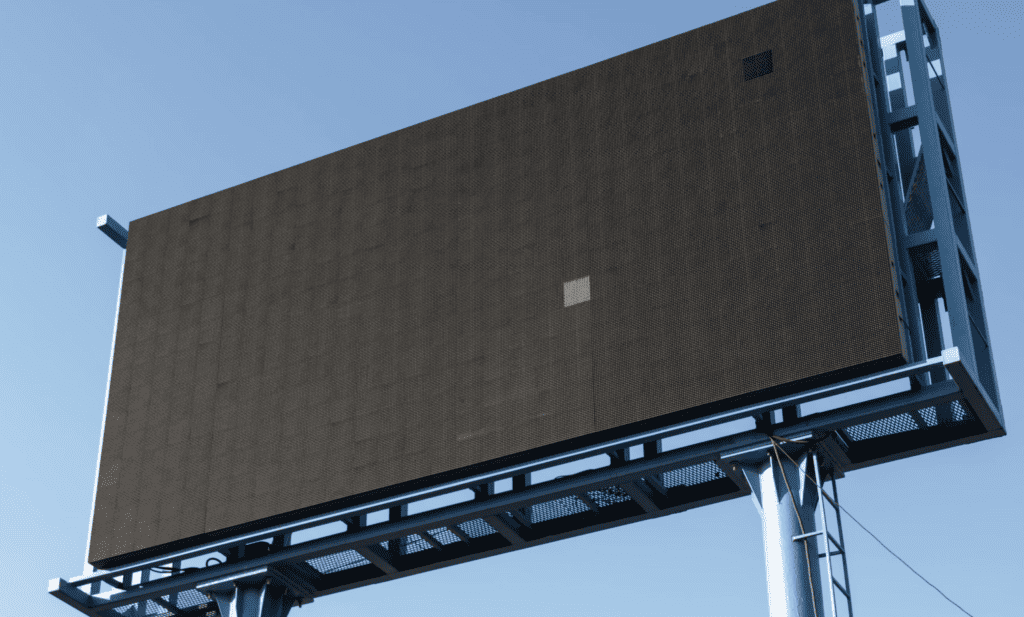A few weeks back, I visited a friend, who is a business owner and runs an organic food store downtown. While driving on the way, as I approached his block, I saw a prominent billboard for his store. The first thing that crossed my mind was this his business may be much larger than I think it is.
How is that for an effect that a billboard creates? For a second I thought that my friend’s organic store was a part of a much larger chain. This made me realise the importance of billboard advertising as a part of a good offline marketing strategy for a small business.
During our conversation, he told me that he had been toying with the idea of putting up a billboard just to see the impact it has on his business. Sure enough, his experiment paid off and within a couple of days of having the billboard up, he saw a large footfall of new customers walking in to check out the store. This Impact of a good print media strategy and offline advertising can only be experienced by a business owner in his organic business taking off.
He gave a good education on why many more small business owners should explore billboard advertising as an avenue to grow their business.
How does bill board advertising help a small business grow?

To address the elephant in the room. Billboard advertising does definitely work to help increase sales. It may look and feel old school, but there are some timeless aspects of billboard advertising that are rooted in core marketing principles which help a business grow.
- Increased Visibility: Billboards are typically placed in high-traffic areas, such as busy roads, highways, or city centers. This ensures that a large number of people see the advertisement, increasing the business’s visibility significantly.
- Brand Awareness and Recognition: Consistent exposure through billboards can enhance brand recognition. When consumers are familiar with a brand, they are more likely to trust and consider it when making purchasing decisions.
- Targeting Local Markets: For small businesses focusing on local customers, billboards can effectively target the local market. This is particularly useful for businesses like restaurants, local shops, or service providers.
- Creating an Impression: A well-designed billboard can make a memorable impression on potential customers. This can be especially beneficial for businesses that offer unique products or services.
- Supplementing Other Marketing Efforts: When used in conjunction with other marketing strategies such as social media, online advertising, or local events, billboards can reinforce the business’s marketing message.
- Driving Immediate Sales: For businesses like restaurants or retail stores, a strategically placed billboard can attract customers on the spot, leading to immediate sales.
- Building Credibility: Having a presence on a billboard can lend credibility to a small business, as it shows that the business is established and serious enough to invest in large-scale advertising.
- Flexible Messaging: Billboards can be used to promote seasonal offers, special events, or new products, allowing businesses to keep their marketing message fresh and relevant.
- Competitive Advantage: In areas where competitors are not utilizing billboards, a business can stand out and capture a larger share of the market through this visible advertising medium.
There is something about a billboard that gives off an impression that any business that invests in billboards is actually a large business. This can massive increase the trust in a business from the local community.
As a business owner, does billboard advertising help you attract local customers to increase your customer base?

There are some ways in which billboards can help you attract locals customers who are new to your business.
Creating Impulse Buys: Billboards positioned near the point of sale, like near a store or restaurant, can trigger impulse buying. A persuasive message or an attractive offer can encourage potential customers to make immediate decisions to visit the business.
Strategic Targeting and Timely Messaging: Billboards allow for strategic placement to target specific demographics or areas. For instance, a billboard near a shopping center can attract shoppers, or one near a residential area can target families. Additionally, billboards can be used to advertise seasonal promotions, special events, or new product launches, which can be very effective in attracting new customers looking for timely offers or unique experiences.
Influencing Commuter Decisions: For businesses like coffee shops, diners, or gas stations, billboards placed along busy commuting routes can influence the decisions of commuters. A well-timed and strategically placed billboard can encourage commuters to make stop-offs or detours, especially if it highlights convenience, quality, or special offers. Adding humour to the message can also go a long way in amplifying its impact.
Seasonal and Event-Driven Promotions: Billboards are great for advertising seasonal offers or tying in with local events. For example, a sporting goods store can use billboard advertising to promote special discounts around local sports events. This type of targeted advertising ensures that the business stays relevant and top-of-mind for local customers looking for specific, timely offers
How can billboard advertising fit into the overall offline marketing strategy for a small business?

There are a few ways in which billboard advertising needs to fit into a small businesses overall offline marketing strategy.
- Synergy with Local Media and Print Advertising: Billboard advertising can be synchronized with local newspaper, magazine, or flyer campaigns to reinforce the marketing message. For instance, a visual theme or slogan introduced in a billboard campaign can be echoed in print ads, creating a cohesive brand narrative that resonates with the local audience.
- Supporting Direct Mail Campaigns: When combined with direct mail efforts, billboards can amplify the message. For example, a direct mail campaign might provide detailed information or offers, while billboards create brand awareness and familiarity. This combination ensures that when the direct mail arrives, the recipient is already primed with recognition of the brand.
- Integration with Outdoor and Transit Advertising: Billboards can complement other forms of outdoor advertising like bus benches, transit ads, or posters. A consistent message across these different mediums can create a powerful and omnipresent brand image in the local area.
- Building Brand Identity and Storytelling: Billboards can play a key role in storytelling and building a brand identity. They offer a large, impactful canvas to convey the essence of the brand, its values, and its story, contributing to a deeper emotional connection with the local audience.
- Leveraging Guerrilla Marketing Tactics: For businesses looking to make a bold statement or create a buzz, billboards can be an integral part of guerrilla marketing campaigns. Creative, unconventional billboard designs can capture public attention and generate word-of-mouth, making them a topic of local conversation.
A small business needs to make sure that all these aspects are covered into his or her offline marketing strategy before laying down the money on varioud marketing channels.
Are billboards effective for small businesses and does advertising on billboards give a good RoI?

The question that many small business owners seem to worry about is that are billboards really effective for their business and can they get an ROI from it. Unlike social media marketing or display ads or search ads, its not that straightforward to measure the return on an investment like billboards.
However, a small business owner should not just evaluate a billboard by hard metrics for RoI, but also look at the softer emotional aspects associated with advertising on billboards. Some factors that small business owners need to keep in mind so that billboard advertising can really benefit them are
- Alignment and integration with the business’s overall marketing strategy
- Targeting the right audience with the right location can have a massive impact on effectiveness
- A small business owner should look at the Cost vs exposure he or she is getting in retun. Typically, a high traffic area is more expensive. So Again, a business owner will have to evaluate the worth of the traffic a particular location gets.
- Creative messaging and other industry specific factors can play a role in the overall effectiveness of any billboard advertising plan.
How much should a small business spend on different kinds of billboard advertisements?
In general, a small business will have to spend about $25,000 for a month in expensive places such as airports or train terminal stations or even prime locations in malls, while they may get slots for $500 a month in more common places such as bus-stops, bus-wraps, inside local trains and metros. A small business may spend about $250 per month in places such as common areas in malls, restrooms and other non-premier locations.
Though these are average values, there are a lot of different factors that can change the prices such as the season of the year, the competition, the state of the economy, the duration of the billboard ad etc.
Examples of billboard ads that have been immensely successful in launching a small business to a period hyper growth

A specific and widely recognized example of a craft brewery that successfully utilized billboard advertising is Dogfish Head Craft Brewery, based in Delaware, USA. While Dogfish Head is now a well-established name in the craft beer industry, its journey to success was markedly boosted by effective marketing strategies in billboard advertising.
In its early years, Dogfish Head used billboards to capture the attention of potential customers in their target markets. One of their notable billboard campaigns involved creative and quirky designs that reflected the unique and off-centered nature of their beers. For instance, they used catchy phrases and humor to stand out, aligning with their brand identity of producing unusual or “off-centered” ales for “off-centered people.”
These billboards were strategically placed in key locations to target beer enthusiasts and to introduce the brand to a wider audience. The visual appeal and distinctiveness of these ads helped Dogfish Head not only to build brand recognition but also to create a buzz around their products.
This approach to billboard advertising was part of a broader, innovative marketing strategy that helped establish Dogfish Head as a pioneer in the craft beer movement. It contributed to the brand’s growth from a small, local brewery to a nationally recognized name in the craft beer industry.
